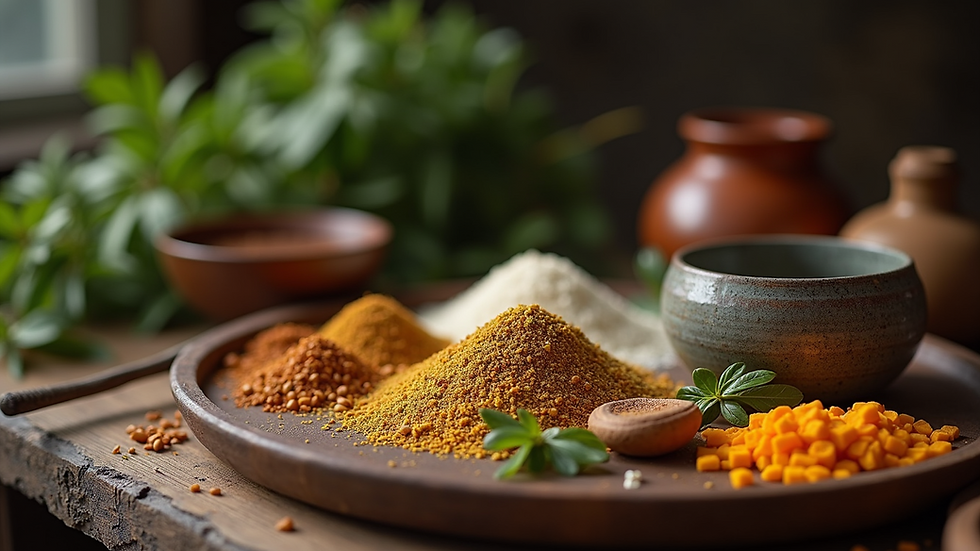Exploring India's Ancient Cannabis History from Bhang Traditions to Contemporary Cultivation
- saltarchgamearchra
- Aug 2
- 4 min read
Cannabis has a rich and intricate history within the cultural tapestry of India. From its early use in religious rituals to its modern-day cultivation and legalization debates, the journey of cannabis in India is as diverse as the country's traditions. This blog will explore the ancient roots of cannabis use in India, focusing on the traditional beverage bhang, the shifting perceptions surrounding cannabis, and the implications of contemporary cannabis cultivation.
The Origin of Cannabis Use in India
Cannabis is believed to have been utilized in India for thousands of years. Archaeological evidence suggests that the plant was revered for both its psychoactive properties and its medicinal benefits. Ancient texts, including the Vedas, refer to cannabis as one of five sacred plants, highlighting its spiritual significance in Hindu culture.
The use of cannabis in religious rituals, particularly in the prayer offerings dedicated to Lord Shiva, is well-documented. Bhang, a traditional drink made from cannabis leaves and buds, holds a prominent place in Indian ceremonies, especially during the festival of Holi. This drink, laden with history and cultural significance, embodies the harmonious relationship between the people of India and the cannabis plant.
Bhang: Cultural Significance and Practices
Bhang is not just a drink; it is woven into the very fabric of Indian society. Consumed during festivals and religious observations, bhang serves both a communal and ritualistic purpose. Its concoction typically involves ground cannabis leaves, mixed with various spices, nuts, and milk, showcasing the culinary creativity associated with its use.
The ritualistic consumption of bhang promotes a sense of togetherness and celebration. During the festival of Holi, it is common for people to share bhang lassis or sweets, symbolizing unity and joy. The drink has been a source of inspiration for countless artists, poets, and musicians, who have celebrated its euphoric effects and its place in Indian culture.
Shifts in Perception: From Reverence to Regulation
As societal norms evolved, the perception of cannabis shifted dramatically. The introduction of the Narcotic Drugs and Psychotropic Substances Act (NDPS Act) in 1985 significantly altered the legal landscape surrounding cannabis in India. This law aimed to curb drug abuse and trafficking but inadvertently stigmatized the cultural and historical use of cannabis, particularly bhang.
Despite legal restrictions, the cultural reverence for cannabis persists. Many believe that the harms attributed to cannabis use have been exaggerated, overshadowing its rich tradition and historical significance. Grassroots movements advocating for the decriminalization of cannabis in India stress the need to return to the roots of its cultural practices rather than treating the plant solely as a substance of abuse.
The Re-emergence of Cannabis in Indian Culture
In recent years, there has been a noticeable resurgence in interest regarding cannabis, particularly with the rising global acceptance of its medicinal properties. This renewed enthusiasm has sparked conversations about the potential benefits of regulatory changes in India. Advocates argue that legalizing cannabis cultivation could empower farmers, boost the economy, and promote responsible consumption.
This resurgence has also been accompanied by a wealth of information on sustainable cultivation practices. Modern farming methods now explore the potential for high-quality cannabis seeds, emphasizing the importance of practices that respect the land and the plant. This focus on sustainability mirrors a larger global trend towards environmentally conscious agriculture.
Legal Landscape: Current Trends and Future Implications
The legal discourse surrounding cannabis in India is complex and nuanced. The NDPS Act remains a significant barrier for cannabis advocates, yet various states are exploring measures to reclaim traditional practices like bhang consumption. Some regions have relaxed restrictions on bhang, granting licenses for production and sale, reflecting a growing recognition of its place in Indian heritage.
As countries around the world continue to embrace cannabis legislation, the implications for India are profound. The potential for economic growth, job creation, and the preservation of traditional practices presents an opportunity for India to reconcile its past with contemporary value systems. Advocacy for a balanced approach to cannabis regulation could pave the way for a more inclusive and nuanced understanding of cannabis in Indian culture.
Conclusion: Bridging Tradition and Modernity
India’s ancient cannabis history, marked by the tradition of bhang and cultural rituals, serves as a testament to the plant's deep-rooted significance. The evolution of cannabis perceptions—from veneration to regulation and back towards acceptance—underscores the ongoing dialogue within Indian society about the plant's cultural, spiritual, and economic potential.
As India stands at a crossroads, embracing both tradition and modernity, the future of cannabis in the country is overwhelmingly optimistic. By recognizing and honoring the historical significance of cannabis, while also promoting sustainable and responsible cultivation practices, India has the opportunity to reclaim a vital aspect of its cultural heritage. The journey from bhang to contemporary cultivation exemplifies the dynamic interplay between tradition and innovation within Indian culture.

In this exploration of India’s ancient cannabis history, it is clear that the nation is on a path towards rediscovering the balance between its rich traditions and the demands of contemporary society. Ultimately, this journey invites not only reflection on the past but also hope for a future where cannabis is embraced for its multifaceted benefits, thereby enriching the lives of countless individuals and communities across the nation.



Comments